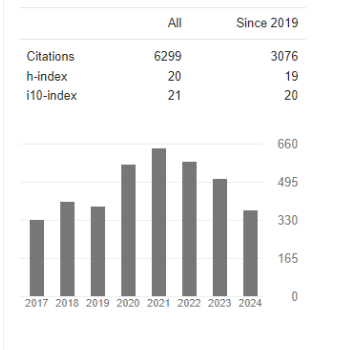Comparative Experimental Studies on Trypanosoma Isolates in Goats and Response to Diminazene Aceturate and Isometamidium Chloride Treatment
Abstract
Abrham Ayele, Shimelis Dagnachew
The objective of this study was to characterize and compare the clinically visible pathological features and drug resistance patterns of two Trypanosoma isolates from two tsetse infested areas of northwest Ethiopia in experimentally infected goats. From the 37 trypanosome free goats, two goats (trypanosome donors) were used to take trypanosome isolates from naturally infected cattle (one from Jawi and the other from Jabitehenen areas). The remaining thirty five goats were randomly assigned into seven experimental groups, each containing five goats. These groups were again randomly selected, and three of them—Group 1 (JWI-1), Group 2 (JWI-DA), and Group 3 (JWI-ISM)—were inoculated with the Trypanosoma of Jawi isolate. Group-4 (JBI-1), Group-5 (JBI-DA), and Group-6 (JBI-ISM) were inoculated with the Trypanosoma of Jabitehenan isolate. The remaining group, Group 7 (NIC), was under negative control. Each experimental goat received 2 ml of trypanosoma positive blood at the 1×106 parasites/ml from donor goats through the jugular vein. Group NIC received 2 mL of sterile water as a negative control. For ten weeks following infection, parameters such as parasitaemia, body weight, PCV, and hemoglobin value were measured once per week. When peak parasitaemia was detected on day 14 of post infection, trypanocidal treatment was administered. Diminazine diaceturate (DA) was given at a dose of 28 mg/kg, and isomethamedium chloride (ISM) was given at a dose of 4 mg/kg. Trypanosomosis was detected on days 5 and 6 of post-infection (Pi) in Jabitehenan and Jawi, T. congolense isolates from infected groups, respectively. When peak parasitaemia was detected on day 14 of post infection, trypanocidal treatment was administered. 7 mg/kg for Group 2 and Group 5 and 1 mg/kg for Group 3 and Group 6 were the treatment doses for DA and ISM, respectively. All of the infected groups (groups 1 and 4; positive control) had severe clinical signs and recumbence within 27 59 days of infection. The mean PCV, total RBC, and Hgb concentration values of Jabitehenan isolate infected groups were significantly (P<0.05) lower than Jawi isolate infected groups, and severe clinical signs in group 4 occurred earlier than in group 1. These findings point to the presence of inter isolate T. congolense variation. Neither of the DA nor ISM treatment groups attained complete recovery, and this shows the presence of disease resistance. A molecular-based study was this study's limitation, and it is recommended to confirm interisolate differences.




